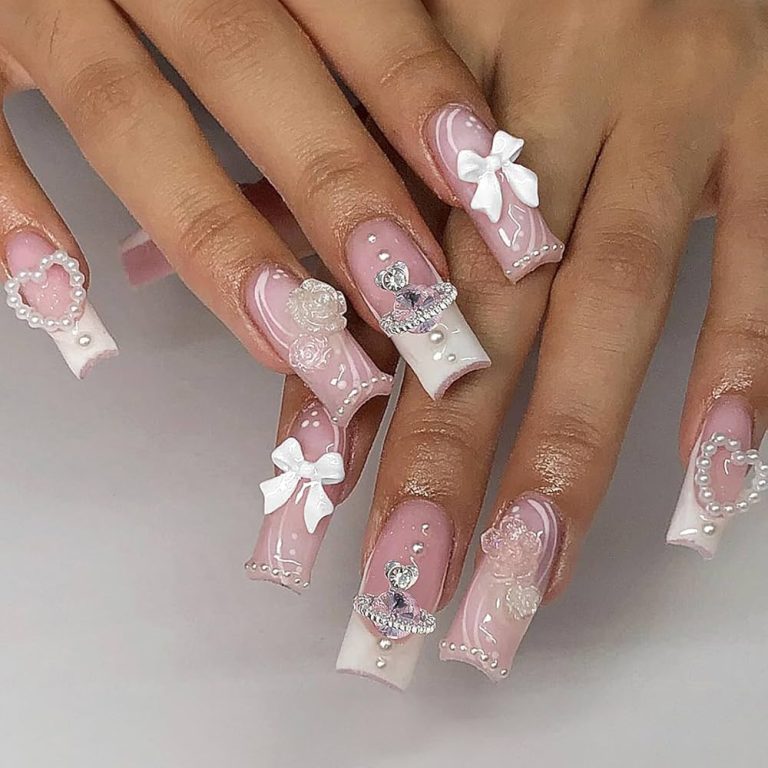
French Nails: Timeless Elegance at Your Fingertips
The Classic Beauty of French Manicures
French nails have stood the test of time as a symbol of elegance and sophistication. This iconic nail style features a pale pink or nude base with crisp white tips, creating a clean and polished look. The French manicure originated in the 1970s but quickly gained popularity worldwide. Its versatility makes it suitable for various occasions, from casual outings to formal events. The simplicity of French nails enhances natural beauty without overwhelming the overall appearance. Many people choose this style for its ability to complement any outfit or accessories.
Furthermore, French nails work well on different nail shapes and lengths, adapting to individual preferences. The contrast between the neutral base and white tips creates an illusion of longer fingers, adding grace to the hands. This timeless look has evolved over the years, inspiring numerous variations and modern twists. Despite changing trends, the classic French manicure remains a go-to choice for those seeking a refined and understated nail style. Its enduring appeal lies in its ability to blend seamlessly with both contemporary and traditional aesthetics.
The History and Evolution of French Nails
The French manicure has an interesting history that dates back to the 1970s. Contrary to popular belief, it didn’t originate in France. Jeff Pink, the founder of Orly nail polish, created this style in Hollywood. He designed it as a versatile look for actresses who needed frequent nail color changes between scenes. The name “French manicure” was coined when Pink introduced the style in Paris, where it gained instant popularity. From there, the trend spread rapidly across the globe. Over the decades, French nails have undergone various transformations.
While the classic white-tipped look remains popular, many variations have emerged. These include colored tips, glitter accents, and intricate designs incorporated into the French style. The early 2000s saw a surge in popularity for French pedicures, extending the trend to toenails. As nail art techniques advanced, artists began experimenting with different shapes and patterns for the tips. Despite these innovations, the essence of French nails – a clean, natural-looking base with contrasting tips – has remained constant. This adaptability has contributed to the longevity of French nails in the ever-changing world of beauty trends.
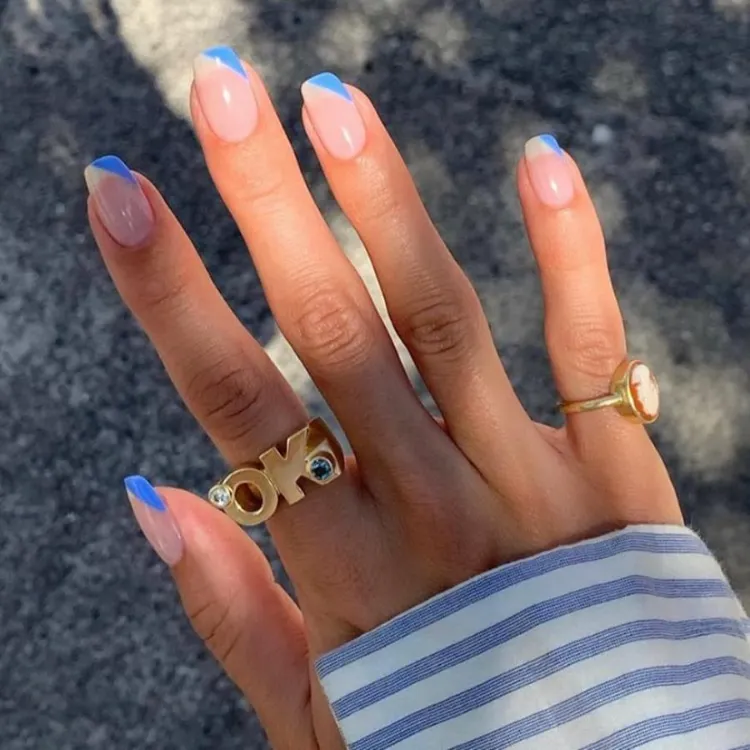
Techniques for Achieving Perfect French Nails
Creating flawless French nails requires precision and practice. Several techniques can help achieve the perfect look. One popular method involves using adhesive nail guides or tape to create crisp lines for the tips. These guides are placed on the nail, leaving the tip exposed for painting. Another technique employs a thin brush for freehand painting of the white tips. This method requires a steady hand but allows for more customization in terms of tip shape and thickness. Some nail technicians prefer using a French manicure pen, which provides controlled application of the white polish.
For those seeking a more natural look, the “smile line” technique involves carefully painting the tips to follow the natural curve of the nail. Regardless of the method chosen, proper nail preparation is crucial. This includes shaping the nails, pushing back the cuticles, and applying a base coat. After creating the French design, a top coat seals and protects the manicure. Practice and patience are key to mastering these techniques. With time, even beginners can achieve salon-quality French nails at home. Additionally, various tools and kits designed specifically for French manicures are available, making the process more accessible to everyone.
Popular Variations of French Nails
While the classic French manicure remains beloved, numerous creative variations have emerged. One popular twist is the colored French tip, which replaces the traditional white with vibrant hues or pastels. This allows for personalization and coordination with outfits or occasions. Another trendy variation is the glitter French tip, adding sparkle and glamour to the classic style. Some prefer a reverse French manicure, where the half-moon at the base of the nail is painted instead of the tip. This creates an interesting and eye-catching look. Ombré French nails blend the tip color seamlessly into the base, creating a soft, gradient effect.
For those who love intricate designs, lace or floral patterns can be incorporated into the French tip area. The double French manicure features two strips of color at the tip, adding depth and complexity to the design. Some opt for a French manicure with negative space, leaving parts of the nail bare for a modern, minimalist look. Metallic French tips offer a futuristic twist on the classic style, perfect for special events or nights out. These variations demonstrate the versatility of French nails, allowing for endless creativity while maintaining the essence of the original design.
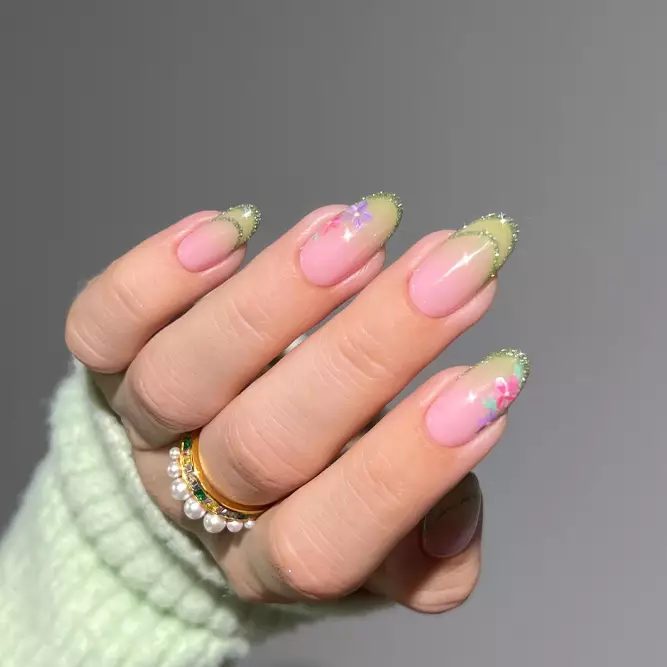
Choosing the Right Colors for French Nails
Selecting the perfect colors for French nails can significantly impact the overall look. The traditional combination of a pale pink or nude base with white tips remains popular for its timeless elegance. However, modern interpretations offer a wide range of color options. For a subtle twist, consider using off-white or ivory for the tips instead of stark white. This creates a softer, more natural appearance. Pastel tip colors like light blue, mint green, or lavender offer a fresh, springtime feel. Bold, bright tip colors such as red, electric blue, or neon pink make a statement and showcase personality.
Metallic tips in gold, silver, or rose gold add a touch of glamour and work well for special occasions. When choosing base colors, consider skin tone to find the most flattering shade. Cooler skin tones often look best with pink-based nudes, while warmer skin tones complement peach or beige-based nudes. For a dramatic look, try a dark base color with light tips, reversing the traditional French manicure color scheme. Seasonal colors can also inspire French nail designs, such as deep reds for winter or coral tones for summer. The key is to experiment with different color combinations to find what works best for individual style and preferences.
Maintaining and Caring for French Nails
Proper maintenance ensures that French nails remain beautiful and long-lasting. Regular moisturizing of the hands and nails helps prevent dryness and cracking, which can affect the manicure’s appearance. Applying cuticle oil daily nourishes the nail bed and promotes healthy growth. Wearing gloves while doing household chores protects the nails from harsh chemicals and water exposure. To extend the life of a French manicure, avoid using nails as tools for opening packages or scratching surfaces. Filing nails gently in one direction, rather than sawing back and forth, prevents splitting and peeling.
Touching up the white tips with a nail art pen can refresh the look between full manicures. If a chip occurs, carefully filing and repainting the affected area can salvage the manicure. For those with weak or brittle nails, using a strengthening base coat under the French manicure can provide extra protection. Regular trims help maintain the desired shape and prevent breakage. When removing nail polish, opt for acetone-free removers to avoid drying out the nails. Giving nails a break between manicures allows them to breathe and recover. With proper care, a French manicure can last up to two weeks, maintaining its crisp and elegant appearance.
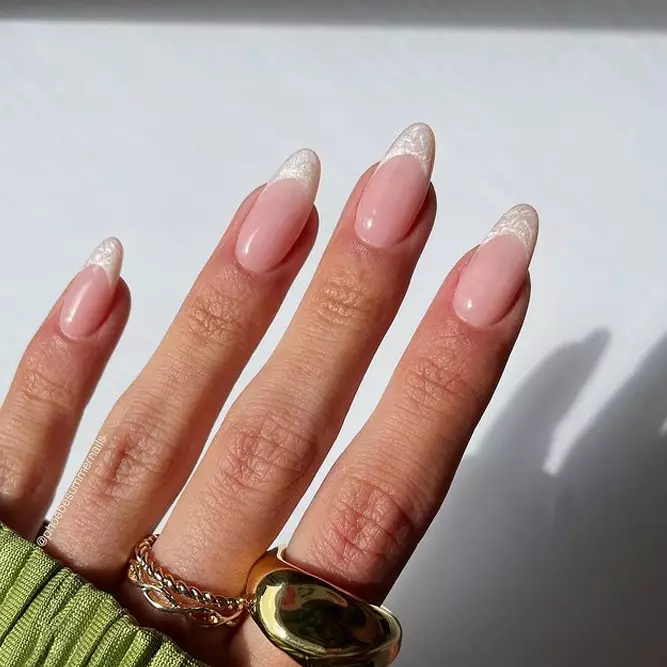
French Nails for Special Occasions
French nails prove exceptionally versatile for special events, adapting to various styles and dress codes. For weddings, brides often choose classic French manicures to complement their gowns without overshadowing them. Bridesmaids can coordinate their French nails with the wedding color scheme by incorporating subtle colored tips. During the holiday season, French nails can be festive with gold or silver tips, or even tiny snowflake designs. For New Year’s Eve celebrations, adding a touch of glitter to the tips creates a sparkling, party-ready look.
Graduation ceremonies call for a polished appearance, making French nails an ideal choice for both graduates and attendees. Professional events benefit from the clean, put-together look of French nails, projecting competence and attention to detail. For red carpet events or formal galas, French nails with a high-shine finish exude sophistication. Beach weddings or summer parties can feature French nails with a pop of tropical color on the tips. Proms and homecoming dances present opportunities for creative French nail designs that match dresses and themes. The subtle elegance of French nails ensures they never overpower an outfit, making them suitable for any special occasion.
DIY French Nails: Tips and Tricks
Creating French nails at home can be a rewarding and cost-effective process. Start with clean, well-shaped nails and apply a base coat to protect the natural nail. For beginners, using French tip guides or tape can help achieve straight lines. Place the guides just below where you want the tips to end. When applying the white polish for the tips, use thin coats to prevent clumping or smudging. A small brush or French manicure pen allows for more precise application.
After the tips dry, carefully remove the guides and touch up any imperfections with a thin brush dipped in nail polish remover. Apply the base color over the entire nail, including the white tips. This creates a seamless blend between the tip and the rest of the nail. Finish with a clear top coat to seal the design and add shine. For those with unsteady hands, try the dip method: paint the tips white, then quickly dip the nail into warm water. The excess polish will float away, leaving a perfect curved line. Practice makes perfect, so don’t get discouraged if the first attempts aren’t flawless. Experimenting with different techniques and tools will help find the best method for individual skills and preferences.
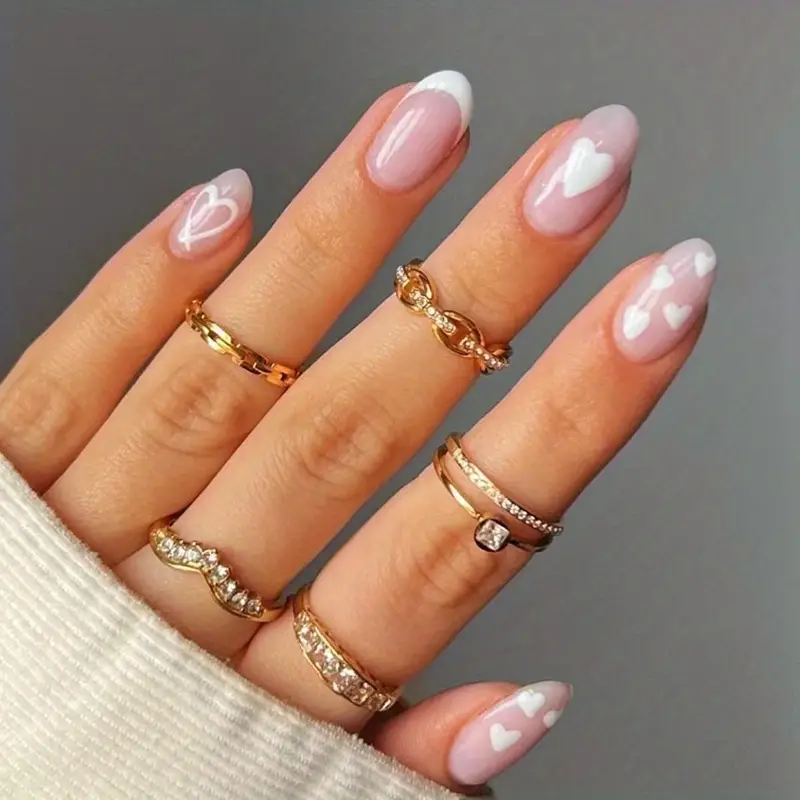
French Nails in Professional Settings
French nails have long been favored in professional environments for their clean and polished appearance. Many workplaces consider French manicures an acceptable nail style, even in conservative settings. The neutral colors and subtle design complement business attire without being distracting. For those in client-facing roles, French nails project an image of attention to detail and personal grooming. In the beauty and fashion industries, well-maintained French nails can serve as a showcase of skill and style awareness.
Healthcare professionals often opt for short French nails, which meet hygiene standards while maintaining a neat appearance. In legal and financial sectors, where a conservative look is valued, classic French manicures fit perfectly with the expected dress code. For job interviews, French nails present a groomed appearance without overshadowing the candidate’s qualifications. In creative fields, subtle variations on the French manicure can demonstrate both professionalism and artistic flair. Even in industries with strict dress codes, French nails typically pass muster due to their understated elegance. The versatility of French nails allows them to adapt to various professional settings, making them a reliable choice for workplace-appropriate nail care.
The Future of French Nails: Trends and Innovations
As nail art continues to evolve, French nails adapt to new trends and technologies. Gel and acrylic French manicures offer longer-lasting results, sometimes maintaining their pristine look for up to three weeks. Magnetic nail polishes create unique effects for French tips, adding depth and dimension. Some innovative nail artists incorporate 3D elements into French designs, such as tiny jewels or raised patterns. Holographic and chrome finishes bring a futuristic twist to the classic French look. Environmentally conscious consumers drive the development of non-toxic, vegan nail products for French manicures.
Customizable press-on nails with French designs provide a quick and easy alternative to salon visits. Nail printers, which can create intricate French patterns, are becoming more accessible for home use. Advances in nail strengthening formulas help maintain the health of natural nails under French manicures. Some predict that virtual reality might soon allow people to try different French nail designs before committing to a style. As fashion cycles continue, vintage-inspired French nail designs from past decades may see a resurgence. The enduring popularity of French nails ensures ongoing innovation in techniques, products, and designs, keeping this classic style fresh and relevant for future generations.

